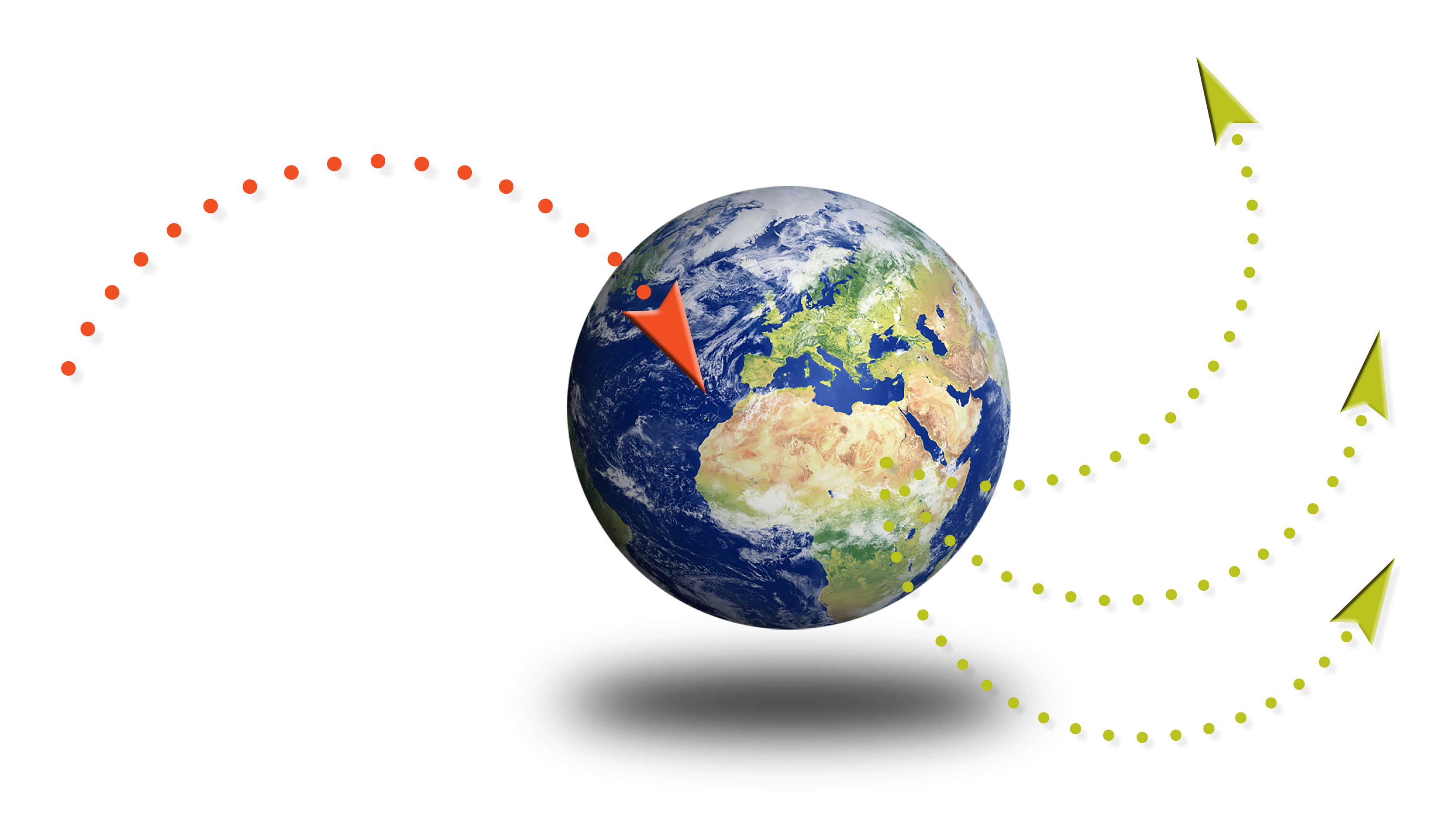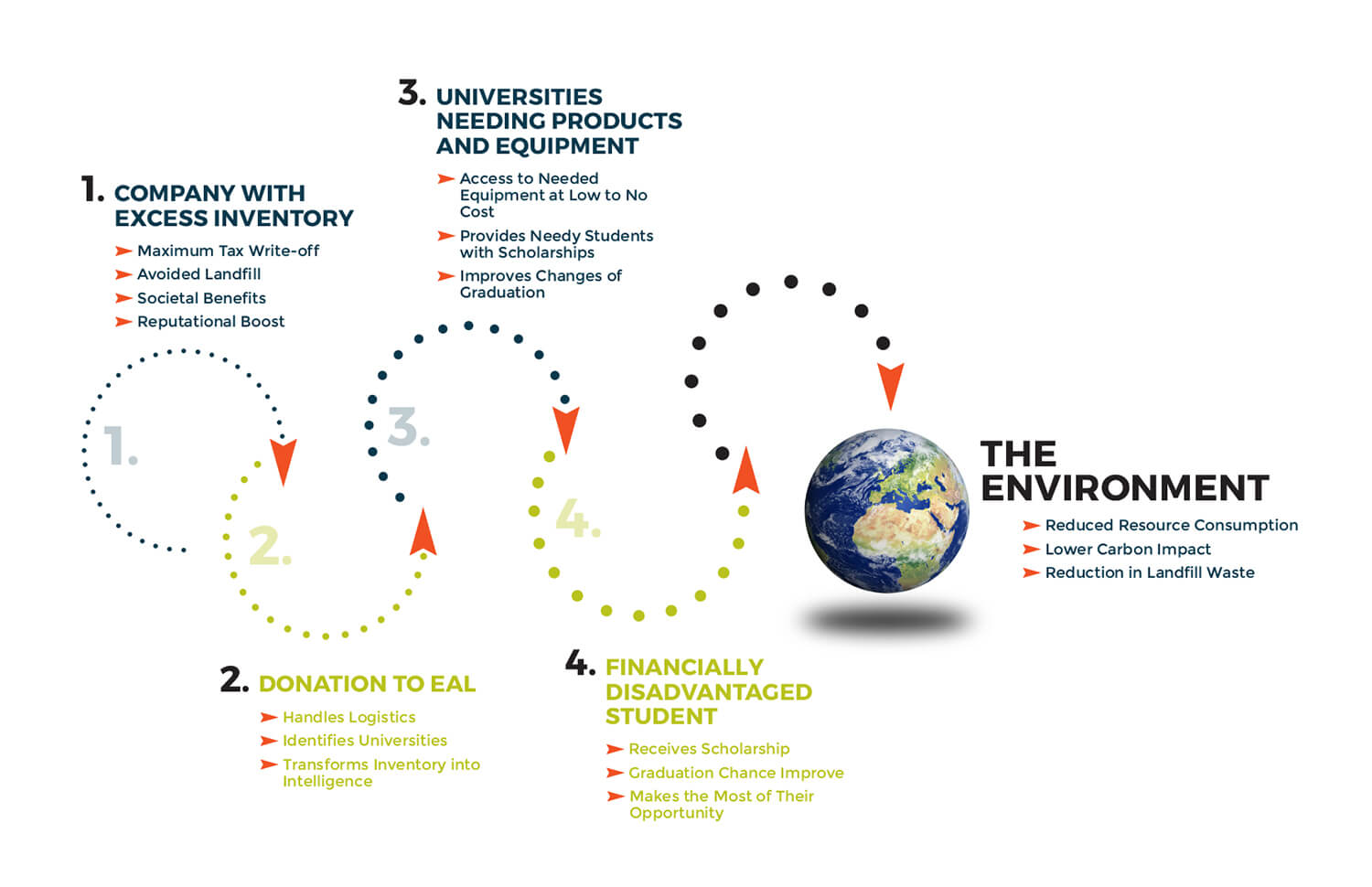|
How EALgreen Works
EAL is a 501(c)(3) nonpartisan nonprofit that connects companies who have goods with Colleges and Universities in need of goods and services. These Colleges and Universities then generate scholarships for needy students with the money they save on products. Together we are building a better future.
EAL Transforms Landfill Bound Inventory

EALgreen's Triple Impact Model
Social
Receive scholarships Graduation chances improve Makes the most of their opportunity Contribution of an educated individual to society
Economic
Maximum tax write-off Avoiding landfill Societal benefits Reputational boost Access to needed equipment at low-to-no-cost Provides needy students with scholarship Improves chances of graduation
Environmental

EAL + DONORS + SCHOOLS = TRIPLE IMPACT & TRANSFORMATION FOR COLLEGES/UNIVERSITIES & STUDENTS
History
EAL was founded on February 2, 1982 by businessman Verlyn “Swede” Roskam as a way to “pay forward” the benefit of a scholarship given to him by an Iowa couple that had lost their son in Normandy. This act of kindness thirty years earlier had inspired him to find a way to help others receive the benefit of an education. He, and his colleague Dan Mickelson, worked together to build EAL on the basis that an education is the single most powerful way to improve one’s life. Their idea came one winter day in 1981, when driving to a sales call they were mulling over a business article they had read about businesses having too much inventory and they thought instead why not ask corporations to donate excess inventory to colleges that can use it? In exchange, colleges would grant scholarships to financially disadvantaged students in amounts equal to the value of the goods, minus a small administrative fee that would help self-fund the organization. Donors would receive a tax benefit, the students would receive a scholarship, and the school would have the equipment they need. Everybody would win.
By February, Swede had founded EAL with headquarters in a spare bedroom of his house. Colleges gave him an enthusiastic response, but corporations were either not interested or suspicious of his intentions. More than once, he came close to giving up. Grainger gave him the break he needed, donating two motors and air conditioners, worth nearly $5,000 in scholarship value. North Park College, then signed up as the first school to join the program and EAL was launched when Claudia Sena (now Claudia Freed, EAL President & CEO), the first EAL Scholar, was selected to receive the financial aid she needed to go to college and transform her life in the same way that Swede had transformed his. Now, 34 years later, the unique business model of EAL has transformed the lives of more than 15,000 financially disadvantaged students with the uninterrupted commitment of Grainger and more than 50 college and university partners throughout the country. Seven years ago, EAL saw an opportunity to leverage this powerful network of donors and schools and began converting into cash donated product too damaged for reuse. Funds raised through these sales are reinvested in education in the form of cash scholarships distributed to EAL’s educational partners. What started as a $5,000 scholarship from motors and air-conditioners has blossomed into more than $18 million in inventory scholarships and almost $2 million in cash scholarships empowering college students to have their own transformation.
Grainger’s extraordinary commitment to education has inspired other corporate donors to join in support of EAL’s socially innovative model that helps students, society, and the environment by giving landfill-bound obsolete inventory a new useful life. Other donors include Cole-Parmer, United Airlines, Warehouse Direct, CDW, among others. Our educational partners represent educational institutions including community colleges, four-year colleges and universities, American Indian colleges, and independent schools that specialize in disciplines such as music, technology, environmental science, and farm-to-table organic agriculture. Attached is a list of our current educational partners
|

